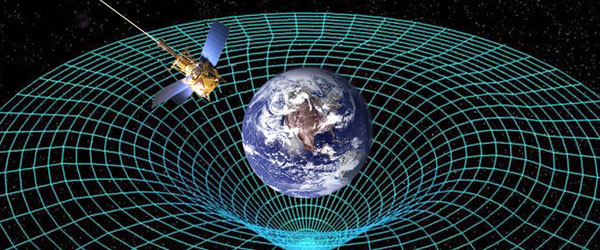The Stars are Waving at You
The buzz around the science world this week is the announcement from The Laser Interferometer Gravitational-Wave Observatory (LIGO) that they have successfully detected gravitational waves. Actually, they hinted a few weeks ago that they had a big announcement coming up and, well that’s what they’ve been trying to do for years, so what else could it be?
So what does this mean and why do we care?
Albert Einstein theorized around one hundred years ago that black holes, which do not emit light, must lose energy as they orbit each other. He concluded that they would throw out energy by creating ripples in the very fabric of space-time. When these objects are moving around rapidly then they kick up ripples that propagate away like the waves you would see from a motorboat going around in a circle.
The next question is: how do we detect them? Since these are waves in space-time they will squeeze or stretch things as they pass by. I don’t know about you but I don’t feel like I’m being stretched or squeezed to any extent so these waves must not be all that big. I may have mentioned it before but, of all the fundamental physical forces, gravity is actually the weakest. The electromagnetic force (that includes lights and magnets) is 1,000,000,000,000,000,000,000,000,000,000,000,000 times stronger than gravity. The effects of these waves are so infinitesimally small that they are very difficult to detect. When Dr. Einstein ran the math way back then he knew how minuscule these waves were and was very, very skeptical that they would ever be detected.
Because of this it has always been theorized that the first event that would have even a ghost of a chance of being detected would be two black holes in a decaying orbit around each other finally colliding and joining into one. It is of no surprise, then, that this is exactly the event that LIGO observed on September 14th, 2015. Well, at least that’s what they say it was because it’s the only theoretical event that would release gravitational waves with enough energy to be detected. It’s not like we can go look because black holes are, well… black and the nearest approximation of when this event occurred is around 1.3 billion years ago. They were able to get a rough idea of the direction to look since there are two LIGO sites, one near Hanford Washington and one near Livingston Louisiana and the Louisiana site detected the signal 7 milliseconds before the Washington site.
Well that’s the stuff you’ll read on the other blogs out there. I want to talk a bit a how this was done. I’m sure that you’ve heard the term Interferometer before but maybe that’s as far as it goes, just another big word that nerds use to look smart. The concept behind these devices is that pretty much everything in the subatomic world is a wave. When you split a wave into two pieces that travel two different paths and then bring them back together they will interfere with each other. If they both traveled the same distance then they will add back together and look the same as the initial wave. If one of them goes slightly further (or shorter) then the waves will not exactly line up when they come back together. The high points add and the low points subtract – an interference pattern is generated. When you use lasers you simplify the equations since the light from a laser is all the same wavelength so the interference pattern becomes very distinct light and dark bands (I covered these concepts in a previous article here).
What is LIGO then? LIGO is based on a device that I’ve talked about several times in my articles, the Michelson, Morley interferometer:

Actually Michelson and Morley didn’t have lasers available when they did their experiments; lasers merely refined the precision of the tests. In the original device the the two legs were 11 meters long, the legs in the LIGO devices are 4 Kilometers long and the mirrors and beam-splitters are aligned so that the beams bounce back and forth some 400 times before they recombine. This makes the LIGO devices something like 144,000 times bigger than the original device.

The precision of LIGO is to be able to detect the change in length of one of the legs thousands of times smaller that the size of a proton (protons are already not very big). This should give you some idea of how weak the interaction of gravitational waves is with physical objects.
The two black holes that collided were calculated to each be around 30 times more massive as the Sun and collided at nearly half the speed of light. At the point of impact, the gravitational energy released was about 50 times greater than all of the stars in the visible universe but still completely dark. Even at that level of energy released (it’s way beyond human comprehension, I won’t bother to throw out any numbers) the amount of squeezing from the gravity wave was still on the order of thousandths of the diameter of a proton. It’s a mere blip; the LIGO team converted it into sound and you can listen to it here. So there you have it, one of the most powerful events in the universe translates to a little more that the squeak of a mouse.
Not to downgrade the triumph of this event. This is just great example of how huge the universe is and how events that release energy on astronomical scales are just blips in the matrix. Maybe we do need some numbers to make it real. The energy released as gravity waves when the two collided was estimated to be equivalent to converting the mass of three of our Suns directly into energy. Remember this
$latex E = mc^{2}$?
The mass of the sun is approximately
$latex 2 \times 10 ^ {30} \,kg.$
Three times that is
$latex 6 \times 10 ^ {30}\, kg.$
So
$latex E = \left(6 \times 10 ^ {30}\right)\left (3 \times 10^{8}\right)^2$
$latex E = \left(6 \times 10 ^{30}\right) \left(9 \times 10 ^{16}\right)$
$latex E = 54 \times 10 ^{46} \, Joules.$
The number above is scarily huge but there are still words in our language that account for it. The world doesn’t always agree on these names but for the general audience here this number is five hundred forty Quattuordecillion Joules (a Joule is roughly the energy of an average sized apple dropped one meter). Just trying to pronounce that makes your head hurt.
You get the idea, it’s incredibly huge, way beyond billions and billions. When it finally gets to us it takes devices with phenomenal sensitivity to have the even the remotest hope of detecting it. This blast of energy was released over a few milliseconds and, at its peak, was around 50 times the intensity of light from the visible universe. If it were light we would have seen it with our eyes. Because it was gravity it was just a blip in one of the most sensitive detectors devised by man.
Okay, enough with the big numbers. I’ve bounced around a bit but hopefully the basic points have made it through. I may seem a bit nonchalant about this announcement but there’s a reason for that. Around twenty years ago I attended a lecture by the esteemed Dr. Kip Thorne, who was working on the initial LIGO project. He described what he suspected was going to happen and it was almost exactly what did happen. That’s also what makes this so interesting to scientists. It’s one of those special events where observation and theory match to a high level of precision. Not to mention that is yet another validation of Dr. Einstein’s theory of General Relativity (hey, you can read more about that in the series of articles that I just started here).
The detection of these waves also proves that we can build devices able to detect the whimper of black holes smashing together and opens the door for even higher sensitivity. Perhaps we’ll be listening to the song of the Solar system as the planets wend their way around the sun in the future. Of course, that will take an increase in precision in the Quattuordecillion range.
This also opens a new era of astronomy. We’ve always had the visual range that has been enhanced to finer and finer degrees with telescopes. Next came Radio astronomy that allows us to listen to the universe and then there’s the gamma ray observatories, x-ray telescopes, infra-red detectors and on and on. Though each of these reveal different aspects of stellar phenomena they are just different ranges of the Electromagnetic spectrum. Gravity wave astronomy brings in a new way to look at how really, really massive things interact.
So what have we learned?
- Gravity is really weak, man…
- Quattuordecillion is a real word.
- The stars wave but nobody can see it.





